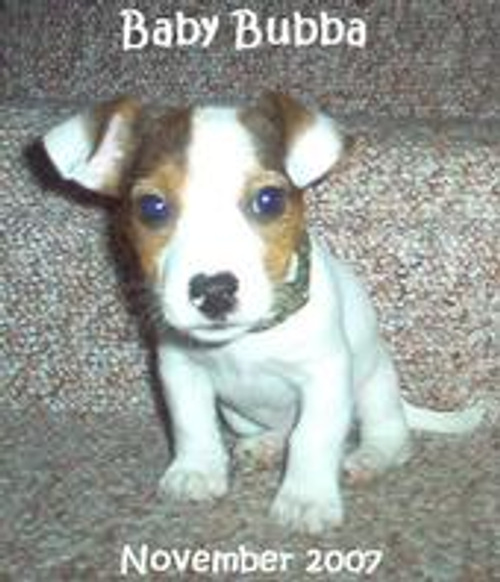The Unexpected Pit Bull is a not-for-profit organization that creates, markets, and sells merchandise celebrating pit bull dogs. The group donates 100% of its net profits to pit bull rescue, education, and advocacy organizations in need of support.
The dog in the photo at right is Miss July, a beautiful bluenose named Atomic Betty who also graces the cover. Look at that sweet, soulful face! Those ladylike white gloves! Her story is especially touching – but I don’t want to spoil the happy ending, so please buy the calendar to find out why.
Since 2004, its professionally-photographed wall calendar has celebrated the love, energy, and spirit that radiates from these wonderful dogs. Each month features a different, glorious pit bull portrait, in words and images, telling a dozen priceless stories of how these wonderful adopted dogs bring year-round joy to their beloved families.
But the photographs are the real draw – in my humble opinion, the photos of pit bulls cuddling with children do more to dispel negative stereotypes about these wonderful dogs than any mere words ever could.
Not surprisingly, The Unexpected Pit Bull Calendar enjoys the open-arms support of pit bull lovers like Rachael Ray, who featured it on her popular TV talk show.
“Somebody took this dog and threw him out like a worthless piece of trash, and used him for sport,” Misseri continues. “But as rescuers, we found him and put all our energy and effort into saving him. So here are the two sides of the equation: The dirtbags who thought nothing of taking this dog, fighting him, keeping him as a bait dog, and then throwing him out. And then you have the side of what we do as rescuers.
The people who threw him out couldn’t even imagine that someone else would put that much money into a dog they had tried to profit from and thrown out. But rescuers won’t hesitate to go broke and make tireless efforts to get dogs saved and rehomed.”
Pacino’s new life began in March, when two police officers on Long Island found the year-and-a-half-old dog wandering the street at 2 a.m. “The officers witnessed the dog walking very slowly, clearly in pain,” Misseri reports. “He was bloody, with bite wounds all over his body.”
The officers gingerly lifted the dog into the back of their vehicle; the dog complied sweetly, and did not resist arrest. The officers were touched by the dog’s gentle nature. So instead of taking the animal to the pound, the officers chauffeured him to a veterinary hospital and contacted the Guardians.
The next day, the dog was transferred to Dominick Marino of Long Island Veterinary Specialists in Plainview, where he was given the medical attention he needed — not to mention megadoses of TLC from the staff. “Doc Marino and his staff have gone above and beyond for Pacino, and we are very grateful to them,” Misseri says.
Because he had scarring over 60 percent of his body, the dark, handsome dog was named after the famously dark, handsome star of the movie Scarface. And K9 Pacino won the heart of a benefactor, Gail Waller, a Guardians supporter who contributed generously to help defray the cost of his hospital boarding.
Gail is a huge Pacino fan: “She brought homemade chicken several times a week for him, and spent quality time with him … she developed a tremendous bond with this dog,” Misseri explains. “Before, he never knew what it was like to be someone’s pet. Now he’ll be ready to be someone’s perfect pet very soon.”
Meanwhile, renowned veterinary behavior specialist Peter Borchelt has been working with K9 Pacino. Dr. Borchelt is confident — as is everyone involved with this extraordinary dog – that Pacino’s strong, good heart and love of people will make rehabilitation smooth and easy.
“Pacino has a great disposition, and he’s great around people,” Misseri adds. “He’s an example of just how much effort goes into saving one dog’s life.”
The Guardians believe that this dog might have been the victim of a dogfighting ring that was recently busted in the area. And so Pacino’s rescue also offers a valuable teaching lesson: ”A team of Guardians, led by Brian Sperazza, has been posting flyers in the area where Pacino was found, both reward flyers and notices alerting the community to the dangers of having children exposed to dogfighting,” Misseri says.
“We hope to raise awareness of dogfighting in the surrounding neighborhoods as well, so that we can put a stop to this terrible form of animal cruelty. And we’re working to gather information that will help authorities pinpoint other dogfighting operations in the area.”
That’s because this excellent calendar celebrates pit bulls for what they really are – just great dogs - so all dog lovers can relate, whether or not they live with a pit.
For the 2012 calendar, on sale now, the irresistible images of Atomic Betty and her fellow models were provided by HeARTs Speak, an organization made up of an international community of artists working to improve the lives of animals in need. HeARTs Speak members generously contributed the photographs that turn this calendar into a must-have holiday gift for all the dog people on your list, regardless of breed affinity.
Now that Hurricane Irene has come and gone, it’s business as usual for the thousands of rescue organizations across the country that do dog’s work every day of the year, weather or not. You’ve read about Guardians of Rescue in this column before. Now, meet the newest Guardians member: a 70-pound pit bull named Pacino.
Rescuing Pacino has set the Guardians back about $15,000. Was the effort worth it? Dogsters, what do you think? Just check out the before and after photos of Pacino — that’s some impressive makeover!
As the Guardians’ Robert Misseri puts it, “Once you’re in, you’re in for good. Pacino is a symbol of the commitment that it takes to do this kind of rescue work.”



























